Holešovice has repeatedly been hailed in recent years as the district to watch; Prague’s next up-and-coming neighborhood, which has slowly been shedding its bad-boy exterior to reveal a (surprising) cache of hidden potential.
Once considered a dilapidated wasteland rife with backstreet drug deals and petty crime, Holešovice has spent the last decade trying to mold itself into a trendy residential community with an edgy industrial-chicvibe. It’s not quite there yet, but this once mainly working-class neighborhood certainly has a lot to offer thanks to steady gentrification that has refurbished aging apartment blocks and transformed former breweries and meat factories into upscale office, retail and cultural centers.
A paint warehouse, for example, is now home to La Fabrika’s expansive performing arts space, while the Dox Centre for Contemporary Art, a direct rival to the National Gallery’s Veletržní Palace, gave a sagging machine factory a much-needed facelift. Even the old slaughterhouse at Bubenské nábřeží found a new claim to fame when SaSaZu, a hip Asian fusion restaurant-nightclub combo, moved in a few years back. And the sleek A7 Office Center, billed as “multifunctional city center,” was renovated from an old 19th-century brewery with input from world renowned architect Frank Gehry (he of Dancing House fame) into one of Prague 7’s busiest commercial hubs.
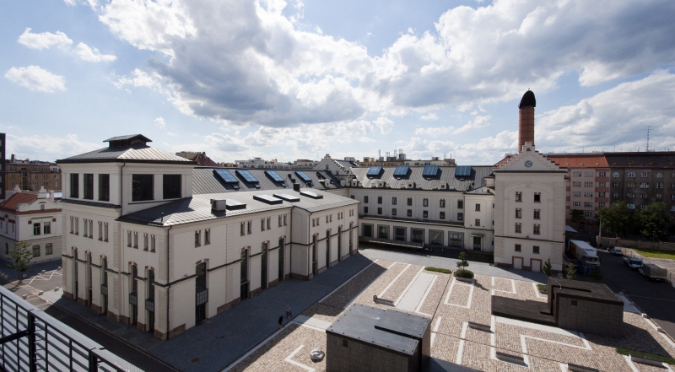
A7 Office Center
“It was a beautiful restoration,” says Jana Zielinski, the director of Profil Media, whose classy Křehký gallery occupies a tastefully decorated space at a former ham factory on Osadní street. “I think that Holešovice has become a very fancy place, and there are good investors willing to put money into the neighborhood.”
Straddling the left bank of the Vltava, just down the hill from Bubeneč and Hradčany, Holešovice may never be as prim and proper as its more formidable neighbors, despite all the development money that’s been pouring in recently. But, really, who wants to see that happen?
Zielinski likens Holešovice to New York City’s Bronx district, a place full of telling contradictions: rough but likeable; dirty but artistic; modern but old; slightly dubious … but only down certain streets and generally late at night. “You still have the contrast between the very poor people, and there are some shops you still wouldn’t want to go into,” Zielinski says. However, there is definitely a lot worth checking out, too. Zielinski oversees Designblok, Prague’s premiere fall design and fashion week, and keeps tabs on the comings and goings of the neighborhood’s growing population of specialty shops, like the Czech furniture retailer Ton, which has a unit along Komunardů street near the Italian home accessories chain Kartell.
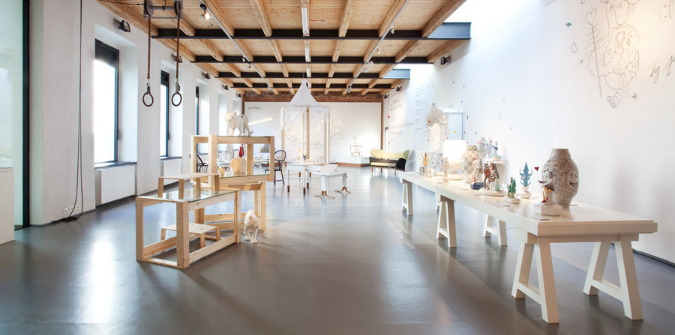
Křehký gallery
Such new high-end facades provide a striking tableau against the numerous second-hand shops and mom-and-pop corner stores peppered throughout the district. The sprawling Prague Market (Pražská tržnice) is also here, boasting amongst its rows of knickknack kiosks and ubiquitous food stands one of the city’s biggest and, as some claim, original farmer’s markets.
“Sure, it’s tacky, but it’s awesome. One of the stalls has the best Vietnamese pho in town,” says Mathias Schwender, whose Sir Toby’s Hostel has been a neighborhood fixture since the late ’90s, outliving many of the businesses that had moved in around the same time.
While Holešovice’s evolution has brought about many changes, Schwender swears the area’s never lost its unique character. “It’s like when I come here, I feel like I am home,” he says. “I still like the local feel and the little shops around here and how they put everything in the windows.”
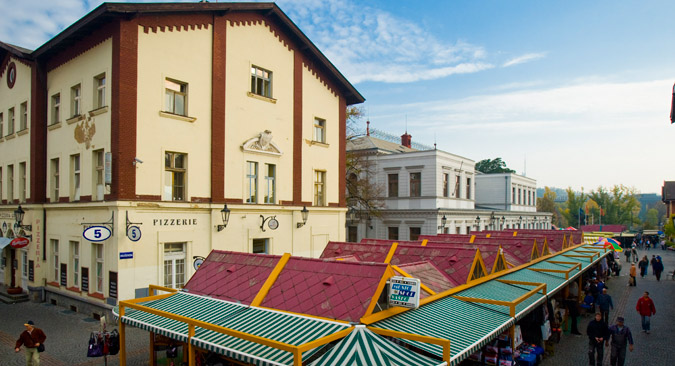
Prague Market (Pražská tržnice)
Admittedly, this is not a prime tourist destination, with just a sprinkling of happening restaurants around. The newly opened Pivovar Marina and its rich blend of house brews springs to mind, as does the fresh fish selection at Trattoria Mercato on the Prague Market grounds. Bohemia Bagel’s location on the other side of the train tracks is also notable, as is the Czech hospoda Domažlická jizba at Strossmayerovo náměstí and Pizzeria Capua’s corner nook up the road.
Rather, it’s the neighborhood’s eccentric nightlife that is the big draw. Holešovice headlines some of Prague’s most well-loved clubs, which consistently attract a young mix of locals and out-of-towners. In addition to newish arrivals like SaSaZu, there are also popular oldies like Mecca and Cross Club, whose industrial furnishing and décor have gotten more than their fair share of guidebook shout-outs.
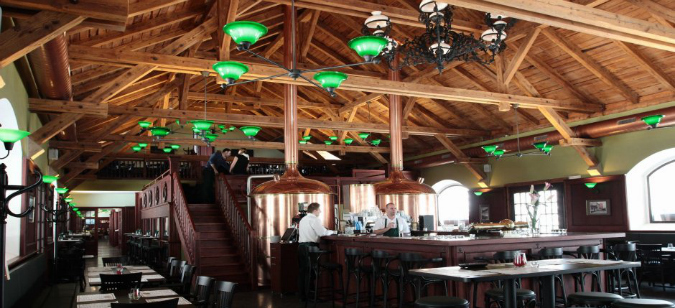
Pivovar Marina
“It looks like a space ship,” Schwender notes with a grin, pointing out that the club owners didn’t completely remodel the space on Plynární street, but chose instead to enhance what was already there. Schwender wishes more businesses would follow suit, before developers turn Holešovice into just another “snobby new neighborhood.”
“It would be the Bohemian way,” he says. “The problem is, the developers don’t have the eye for this, and the artists don’t have the money.”
The only thing the neighborhood is really missing, according to Schwender, is a couple of cafes. “Write that down in your story and inspire someone to open one. We would go there and tell all our guests to go there,” he says. “I think someone could be really successful here.”
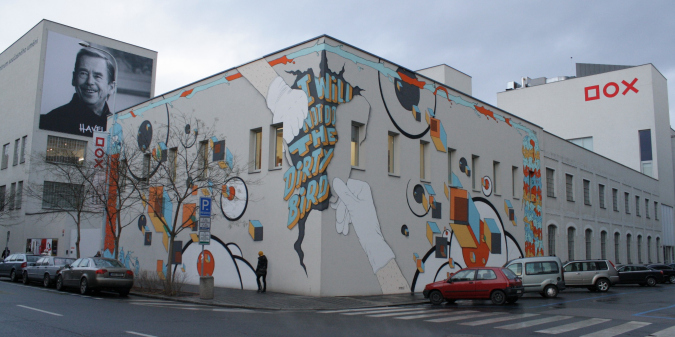
Dox Centre for Contemporary Art
There are a few places that serve fresh brewed coffee and teas around Strossmayerovo náměstí. Ouky Douky and its bookshop is an expat favorite and the lazy ground floor cafe at Kino Bio Oko is another cheap option.
Schwender, however, shakes his head. “That’s not really Holešovice. I mean, it is,” he says, “but there’s a different feel over on that side.”












 Reading time: 4 minutes
Reading time: 4 minutes 





















